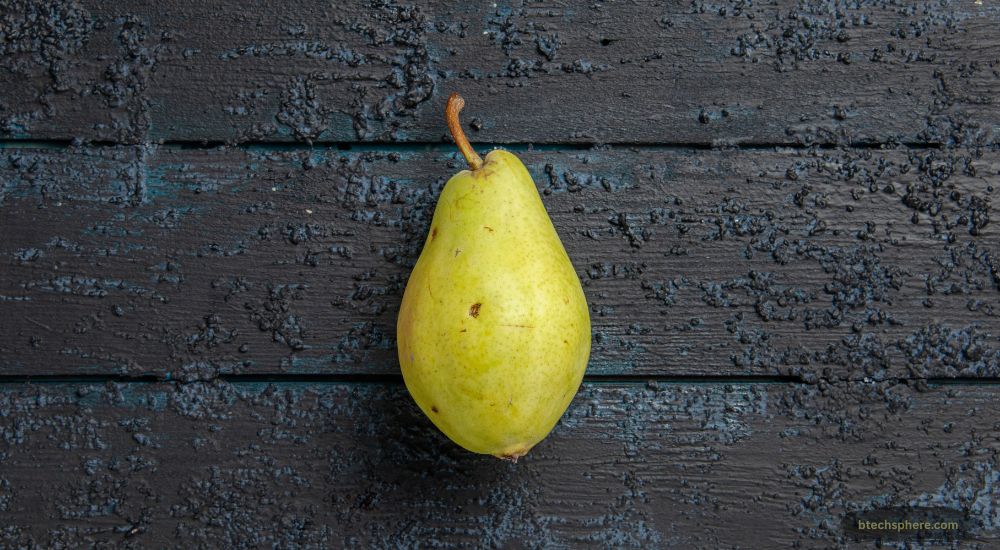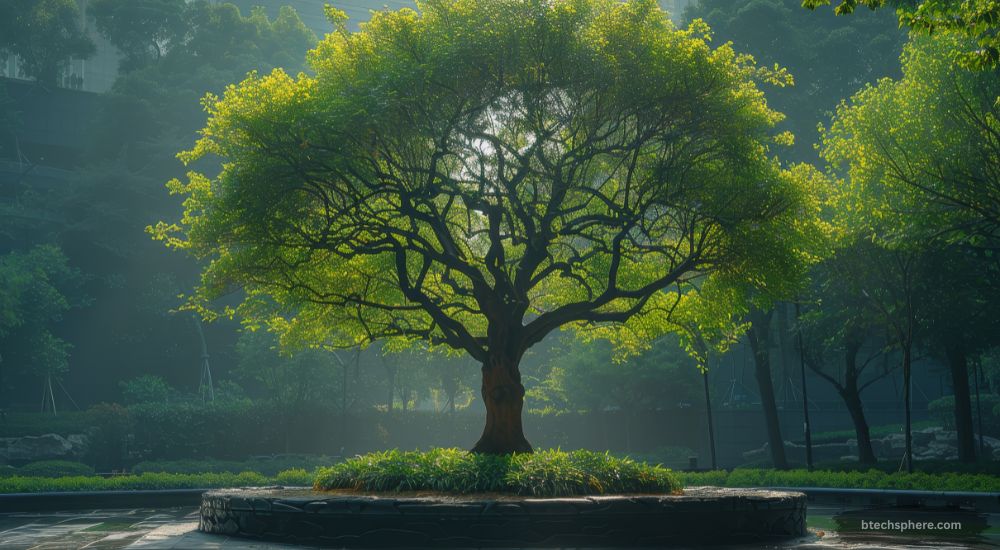The Navigator Pear is a popular ornamental tree known for its elegant form, stunning foliage, and adaptability to various environments. Often chosen for urban landscapes and residential gardens, the Navigator Pear offers both beauty and resilience. With its lush canopy and vibrant seasonal color changes, this tree adds an artistic touch to any outdoor setting while requiring relatively low maintenance.
Origins and History of the Navigator Ornamental Pear
The Navigator Ornamental Pear, scientifically known as Pyrus calleryana ‘Navigator,’ is a hybrid cultivar bred for its hardiness and structural strength. It was developed as an improved ornamental variety that could withstand urban challenges such as pollution, compacted soil, and temperature fluctuations. The Navigator Pear tree is part of the broader Pyrus calleryana family, originally native to Asia, but it has been selectively bred and cultivated for ornamental use worldwide.
Unique Characteristics of the Navigator Pear Tree
The Navigator Pear Tree stands out for its strong structure, symmetrical shape, and year-round beauty. It is specifically bred to be more durable and reliable than other ornamental pear varieties, making it a preferred choice for urban and residential landscapes.
- Strong Central Leader: It develops a single dominant trunk, reducing the risk of weak branches or splitting.
- Symmetrical Growth: The tree grows in a balanced, upright shape, giving it a neat and elegant appearance.
- Glossy Green Foliage: Its leaves are shiny and vibrant during summer, adding a fresh look to the surroundings.
- Beautiful Autumn Colors: The foliage transforms into deep shades of red, orange, and bronze in fall.
- Compact Canopy: Its moderate size makes it suitable for narrow spaces, streets, and smaller gardens.
Overall, the Navigator Pear combines beauty, strength, and adaptability, making it a low-maintenance yet highly decorative tree for any landscape.
Botanical Description and Growth Habits
The Navigator Pear typically grows between 7 to 10 meters tall, forming a dense, oval canopy that provides generous shade. It exhibits a moderate to fast growth rate and produces small white blossoms in spring, followed by tiny, inedible fruits that serve as food for birds. Its bark is smooth when young, becoming slightly textured with age, and its branches grow in a well-organized pattern that enhances its visual symmetry.
Seasonal Appearance and Foliage Colors
One of the most admired features of the Navigator Pear is its vibrant seasonal transformation. In spring, the tree bursts into clusters of white flowers that fill the air with a light fragrance. During summer, its leaves remain deep green and glossy, reflecting sunlight beautifully. As autumn approaches, the foliage changes dramatically into fiery shades of orange, red, and burgundy, creating a stunning display before winter dormancy.
Ideal Growing Conditions for Navigator Pear Trees
The Navigator Pear tree flourishes best when planted in environments that mirror its natural adaptability. It performs well in a variety of soil types and can thrive in both urban and suburban landscapes when given the right care and positioning.
Key Points:
- Soil Type: Prefers well-drained loamy or sandy soil but can tolerate clay if drainage is adequate.
- Moisture: Requires moderate watering during establishment; once mature, it becomes drought-tolerant.
- Sunlight: Grows best under full sun exposure for at least 6 hours daily to ensure vibrant foliage and strong flowering.
- Climate: Highly tolerant of heat, wind, and cold, making it suitable for a wide range of climates.
- Space: Ensure enough spacing (around 5–6 meters) for roots and canopy expansion without crowding nearby plants.
With these ideal growing conditions, the Navigator Pear maintains its beauty, structure, and health throughout the year.
Soil and Water Requirements
The Navigator Pear grows well in loamy, sandy, or clay soils, provided there is good drainage. Excessively waterlogged soil can lead to root rot, so it’s important to ensure the planting site has proper runoff. During dry seasons, deep watering once every week or two helps maintain soil moisture, but overwatering should be avoided. Mulching around the base can further help retain moisture and prevent weed growth.
Sunlight and Temperature Tolerance
This ornamental pear tree thrives under full sunlight, requiring at least six hours of direct exposure each day. It is known for its excellent heat and cold tolerance, making it suitable for a wide range of climates. Even in areas with harsh winters or hot summers, the Navigator Pear maintains its structural integrity and beauty. Its adaptability is one of the reasons it is favored in both residential and commercial landscaping.
Planting and Spacing Guidelines
When planting Navigator Pear trees, proper spacing is essential to allow healthy growth and air circulation. A distance of around 5 to 6 meters between trees is recommended for optimal canopy development. The planting hole should be twice as wide as the root ball and deep enough for the roots to spread comfortably. Adding compost or organic matter during planting can enhance soil fertility and establish strong early growth.
Caring for the Navigator Ornamental Pear
Navigator Pears are relatively low-maintenance trees, but regular care ensures their longevity and beauty. Annual pruning helps maintain shape and remove dead or crossing branches. Fertilizing once in early spring with a balanced formula supports healthy leaf and flower production. Routine inspection for pests or diseases allows early treatment before problems spread.
Common Pests and Diseases
Though resilient, the Navigator Pear can sometimes face challenges like aphids, scale insects, or leaf spot diseases. However, it has a better resistance profile compared to older pear varieties. Proper spacing, pruning, and maintaining cleanliness around the tree base reduce the risk of disease. Applying horticultural oil or mild insecticidal soap can help control minor pest issues.
Caring for the Navigator Ornamental Pear
Taking care of a Navigator Ornamental Pear is quite simple, as the tree is naturally hardy and adaptable. However, providing the right attention ensures it stays healthy and vibrant for years. Regular care not only enhances its beauty but also helps it resist pests and diseases effectively.
- Watering: In the early growth stage, water the tree deeply once or twice a week. Once established, it becomes drought-tolerant but still benefits from occasional deep watering during dry periods.
- Fertilizing: Apply a balanced, slow-release fertilizer in early spring to support strong leaf and flower growth. Avoid over-fertilizing, as it can lead to weak branches.
- Mulching: Spread a 5–8 cm layer of organic mulch around the base to retain moisture and keep the soil cool. Keep mulch away from the trunk to prevent rot.
- Pruning: Trim during late winter or early spring to remove dead or crossing branches. Light pruning helps maintain its natural shape and prevents overcrowding.
- Pest and Disease Check: Inspect the tree regularly for signs of aphids, leaf spots, or fungal issues. Treat mild infestations with horticultural oil or neem spray.
With consistent care, the Navigator Ornamental Pear rewards you with lush foliage, a strong structure, and stunning seasonal color that enhances your landscape throughout the year.
Landscaping Uses and Aesthetic Appeal
The Navigator Pear is a versatile tree that fits beautifully in both formal and informal landscapes. Its compact size and attractive symmetry make it perfect for lining driveways, streets, and property borders. During spring and autumn, its colorful displays enhance visual appeal, while in summer, its dense foliage provides shade and a refreshing atmosphere. It also pairs well with flowering shrubs and low-maintenance perennials in garden designs.
Environmental Benefits and Sustainability
Beyond its visual charm, the Navigator Pear contributes to environmental well-being. It absorbs carbon dioxide, provides shade that reduces heat buildup in cities, and offers a habitat for birds. Its tolerance for pollution and drought also makes it a sustainable choice for urban planting, where ecological resilience is increasingly important.
Comparison with Other Ornamental Pear Varieties
Compared to varieties like Pyrus calleryana ‘Bradford’ or ‘Capital,’ the Navigator Pear has superior branch structure and reduced risk of limb failure. Its narrower canopy makes it more suitable for confined urban spaces, while still providing an equally impressive display of flowers and foliage. It’s a balanced choice between beauty, durability, and manageability.
Why Choose Navigator Pear for Urban Areas
Urban environments demand trees that can withstand stress, pollution, and limited root space. The Navigator Pear excels in these conditions due to its strong adaptability and compact form. It thrives along streets, in parking lots, and in public parks, offering shade and aesthetic value without the structural problems common to older ornamental pears.
Challenges and Considerations Before Planting
Although generally easy to grow, potential planters should consider the tree’s mature size and root spread before planting near buildings or sidewalks. Occasional pruning is necessary to maintain its shape, and in some regions, strong winds may require young trees to be staked initially. With proper care and placement, however, these challenges are easily managed.
Conclusion
The Navigator Pear is more than just an ornamental tree—it’s a resilient, elegant, and environmentally beneficial choice for modern landscapes. Its versatility, stunning seasonal beauty, and ability to thrive in tough conditions make it a top pick for both homeowners and landscape designers. Whether you’re looking to beautify a street, garden, or park, the Navigator Pear stands as a symbol of natural grace and endurance.











